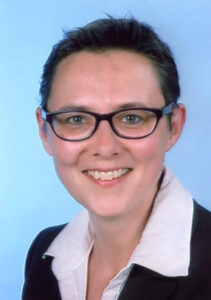 Kamilla György Ullholm, yliopistonlehtori, Stockholms universitet, Ruotsi
Kamilla György Ullholm, yliopistonlehtori, Stockholms universitet, Ruotsi
Kamilla György Ullholm är lektor i svenska som andraspråk vid Stockholms universitet, Institutionen för språkdidaktik. Hennes främsta forskningsintressen rör språklig socialisation i flerspråkiga familjer, tvåspråkiga barn och undervisning av minoriteter. Hon är uppvuxen med flera språk i ett multietniskt område i Östeuropa, Transylvanien, har ungerska som modersmål, men gick i en tyskspråkig klass – en sorts valt språkbad från föräldrarnas sida. Hon är en ovanlig kärleksmigrant i Sverige: Hon blev nämligen förälskad i svenskan i 20 års åldern när hon såg en svenskspråkig film på bio i Budapest.
Keynote: Från vardagsspråk till ämnesspråk – Hur kan vi stimulera barn till ett glädjefyllt lärande i skolan på ett andraspråk?
En föreläsning om språk- och kunskapsutvecklande arbetssätt med presentationer av några tankemodeller som hjälper lärare att strukturera upp sin undervisning på ett sätt som stärker elevernas utveckling av andraspråket. I föreläsningen berörs följande aspekter:
- skillnader mellan vardagsspråk, skolspråk och ämnesspråk
- vad en lärare kan göra i form av planerad och oplanerad stöttning (på engelska scaffolding) på lektionstid,
- lektionsplanering baserad på koncepten kontextuellt stöd och kognitiv utmaning
- cirkelmodellen som ett exempel på detta tänk.
 Julia Festman, professori, Pädagogische Hochschule Tirol/Itävalta
Julia Festman, professori, Pädagogische Hochschule Tirol/Itävalta
Julia Festman is professor of Multilingualism at the Pedagogical University Tyrol in Austria. Before arriving in Austria, she was head of an interdisciplinary research group at the University of Potsdam, Germany and P.I. of the RASCH-project. This empirical, interdisciplinary project focused on the acquisition of reading and writing in primary school and is based on a large cohort of third-grade children in the Berlin area. After her studies at the Universities of Bamberg and Berlin (teacher training) she went to Israel (Bar Ilan University) for her Ph.D. on trilingualism. She also spent a year in France teaching in a high school, and in the UK (University of Exeter) for a post-doc research project. Her research covers psycholinguistic and neuroscientific approaches to acquisition, learning and processing of language(s). Moreover, due to her interest in the best, supportive conditions and environments for learning, her research projects in the UK, Israel, Germany and Austria focus on language acquisition in kindergarten, at school, and in international families.
Her publications include journal articles on language switching, the diversity of bilinguals, the bilingual advantage debate and books on raising multilingual children, reading in primary school as well as many book chapters such as the psycholinguistics of multilingualism in Singleton & Aronin (2019).
Keynote: On the importance of self-concept and emotion in multilingual education
From early on, multilinguals choose – whenever possible – which language to use for a certain context, with a certain person. In some everyday contexts, they follow institutionally predefined language use patterns, e.g. the official school language, or the common language spoken in their kindergarten. Among the factors for their own language-choices are emotions towards the available languages and the speaker’s own perception of how well each language is mastered. The notion of self-concept comprises the individual’s ideas of him/herself (Shavelson, Hubner, & Stanton, 1976) including competences in diverse skills.
The importance of knowledge about the development of self-concept is a much-underestimated aspect in teacher or pedagogue training despite its high importance for the speakers. A positive self-concept, essential for a healthy personality and identity development (Hellmich, 2011), is related to and influences academic achievement (Martschinke, 2011). Learning environment and appropriate, supportive feedback are crucial factors for shaping one’s self-concept, starting with exaggerated positive self-concept during the kindergarten age progressively differentiated with increasing age (Möller et al., 2015). At school, external evaluations, judgments, feedback from significant others (e.g. teachers, peers, parents) are the core means by which children shape their self-concepts.
To reveal multilingual speakers emotional connection to each of their languages, the language portrait (Neumann, 1991) is often used. Based on this information, the pedagogue is supposed to understand better what importance, value and experience a speaker attributes to a certain language. This might offer the possibility to take this information into consideration and into account when planning lessons, activities and adapting teaching strategies.
The keynote with draw on empirical evidence from two studies. The data from a study with linguistically diverse kindergarten children (PROBIMUC, Festman 2018) will show how self-concept in two languages develops in the course of an immersion intervention. The second study (Festman & Schwieter, 2019) gives insight into mono- and multilingual children’s realistic self-concept evaluations in reading and spelling. This evidence will be used to develop descriptions of implications for pedagogical actions.
